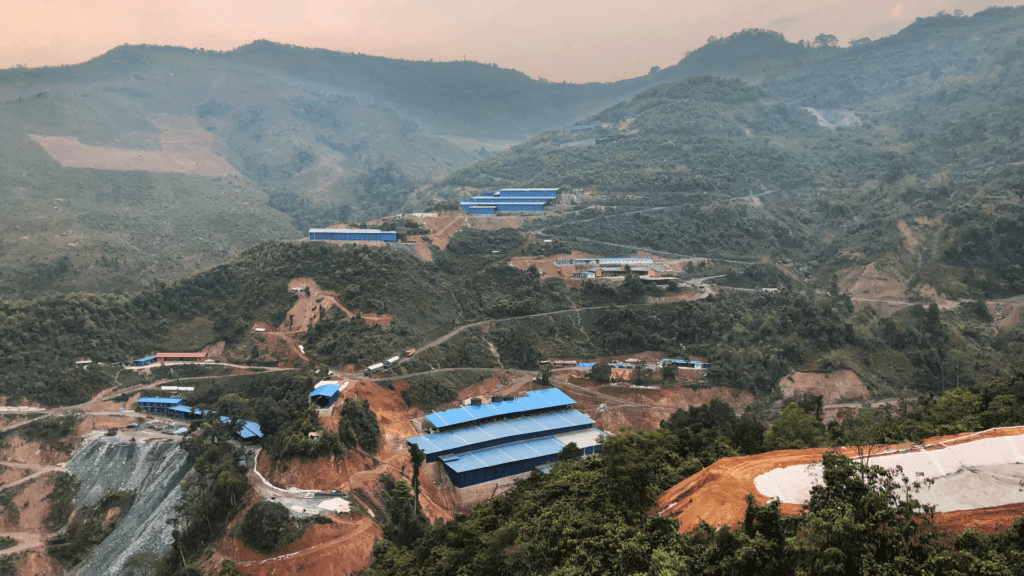Column: Tin supply chain tightens after key mine’s long absence
Reuters | September 13, 2024 |

Man Maw tin mine. Credit: International Tin Association
It’s been just over a year since the Man Maw tin mine in Myanmar, one of the world’s largest sources of the strategic metal, halted production.

While high raw material and refined tin stocks have so far insulated the market from the full impact, that’s starting to change.
When the Wa authorities, an autonomous ethnic group controlling most of Myanmar’s tin resources, ordered a total suspension of all mining and processing activities in August 2023, most expected the supply hit to last only a few months.
Other smaller mines in Wa territory have since been allowed to reopen. Authorities have also permitted the export of above-ground tin stocks from Man Maw but production remains suspended.
While tin concentrates continue to flow across the border to feed China’s smelters, volumes have fallen sharply in recent months, highlighting the lack of activity at the biggest mine.
Dark producer
The Wa State mines are a statistical black hole in global tin supply data. There are no official production statistics and output can only be inferred from the amount of raw material passing through Chinese customs.
The International Tin Association estimates Myanmar produced around 40,000 metric tons of contained tin in 2022, with Man Maw accounting for around 70% of that.
That makes the Wa State the world’s third largest tin producer after China and Indonesia, with Man Maw itself representing 7-8% of global mine supply.
The Wa authorities said the suspension of activities was needed to allow an audit of the tin sector, which has grown exponentially from what began as informal artisanal operations at the start of the last decade.
In this respect the Wa State is no different from any other resource-rich country looking to take tighter control of their assets.
What’s unclear is why the audit has taken so long.

China tin concentrates imports by origin country
Reduced flows
The impact of the year-long closure is becoming increasingly visible in China’s import flows.
China imported 100,000 tons of Myanmar tin concentrates in the 10 months after the start of the audit in August 2023, compared with 173,000 tons in the prior 10-month period.
Trade flows between the two countries slowed to just 11,300 tons in the second quarter of this year from 43,600 tons in the first quarter, suggesting a depletion of above-surface stocks.
Chinese producers have had only limited success in finding alternative sources with increased imports from Australia, Bolivia and Nigeria not enough to plug the gap.
Total tin raw material imports fell by 26% year-on-year in the first seven months of 2024, LSEG data shows.
Chinese smelters have begun adjusting maintenance schedules and tweaking production plans to compensate.
Yunnan Tin, the world’s largest refined tin producer, shut its Geiju smelter for 45 days of maintenance at the end of August.
Others in the provinces of Yunnan and Jiangxi have been reducing output due to a shortage of feed, according to local data provider Shanghai Metals Market.

Tin stocks on the LME and ShFE
Stock slide
The suspension of tin mining was flagged by the Wa authorities in April 2023, allowing China’s tin sector to build up stocks.
Imports of refined tin accelerated over the fourth quarter of 2023 and Shanghai Futures Exchange stocks rose to an all-time high of 17,818 tons in May.
Registered exchange inventory has been sliding ever since and stands at 9,499 tons. Given domestic production is being constrained by growing raw material shortages, the downtrend is likely to continue for the next few months at least.
LME tin stocks have fallen by 39% to 4,725 tons since the start of the year, although as of the end of July there were another 2,207 tons of shadow stocks sitting in LME warehouses.
The Western supply chain has been more affected by slower Indonesian shipments than by the Man Maw situation. Indonesian exports fell by 44% year-on-year to 24,600 tons in the January-August period due to early-year permitting delays.

LME metals relative performance in 2024
Risk premium
The tin market has been lucky with the timing of Man Maw’s suspension.
Half of global usage is in the form of solder for circuit-boards, meaning demand is highly sensitive to electronic goods sales.
Semi-conductor sales, a useful proxy for tin solder demand, are only now emerging from a prolonged two-year slump, which helps explain why global tin stocks were so high in the first half of 2024.
Tin has still outperformed every other LME-traded metal by some margin. LME three-month tin was trading at $31,770 per ton on Friday, up by 25% from the start of January. The next strongest performer, copper, has year-to-date gains of just 8%.
It’s clear that the tin price contains a Man Maw risk premium and will continue to do so until the Wa authorities permit a return to normal operations.
Only the Wa leadership knows when that will be and they may be focused on other matters.
Although the United Wa State Army is not directly involved in the ongoing civil war raging across Myanmar, Man Maw may not be top of the priority list.
(The opinions expressed here are those of the author, Andy Home, a columnist for Reuters.)
(Editing by Alexander Smith)
No comments:
Post a Comment